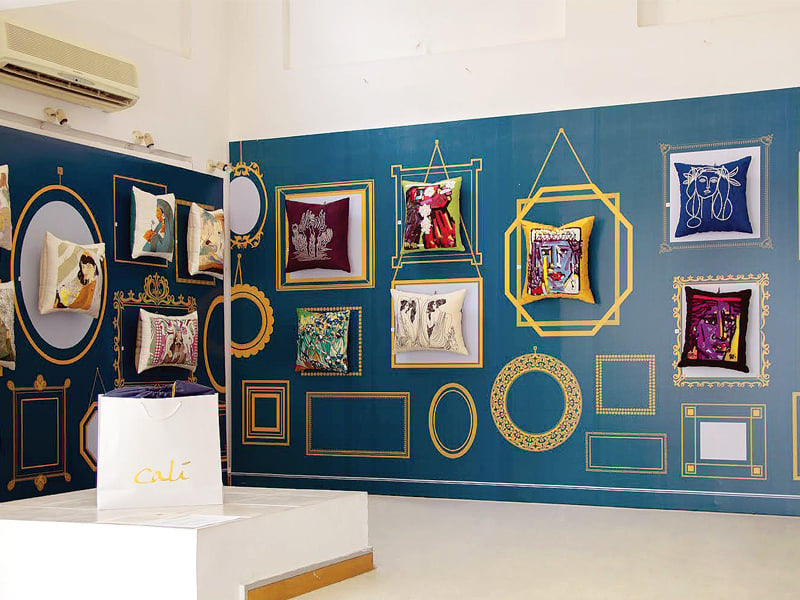
After Cyra Ali graduated from the Indus Valley School of Art and Architecture in 2010, she participated in several group shows. Having been featured in shows, such as ‘Are you in Character?’ at Gandhara Art Space and ‘Dubai and Mere Humd(r)um’ at the Aicon Gallery, New York, Cyra has now been broadening horizons with her brand House of Cali.
Founded in 2012 along with a group of artisans, the House of Cali celebrates the artistry of local craftsmen by reviving and preserving techniques of hand embroidery and infusing them with quirky art and designs. The resulting pieces are unique, as Cyra started working on translating famous pieces of art onto cushion covers. “My mother wanted new cushions and we went looking for them, but couldn’t find anything that was appealing,” she says. “That’s when I decided to make some cushions for her, which is how the House of Cali started,” she adds.

For the first time ever, the brand recently showcased its latest collection at the Sania Maskatiya store on MM Alam Road in Lahore. Previously, Cyra had focused on the works of Pablo Picasso, Henri Matisse, Vincent van Gogh and Gustav Klimt. But this time around, she says, “I have primarily focused on Pakistani artists, such as Abdur Rahman Chughtai, Sadequain and Bashir Mirza, with a few cushions depicting works by Picasso, Mark Rothko and Klimt.”
“The reason why I opted for more local artists this time is because people identify with them the most and there is an appeal in acquiring these pieces,” she comments. She says she incorporated more works of Pakistani artists into her pieces because although international artists’ on the cushions do well, those with art by Pakistanis were among the first to be sold in her previous collections.

The two-day exhibition showcased around 40 cushions, intricately embroidered using various techniques to recreate the masterpieces. “It has been difficult to recreate some of these paintings, with Van Gogh and Klimt being some of the hardest,” shares Cyra. She feels that is because there is a lot of detail in each of their pieces, so it not only takes time but also patience to recreate them.
On the question of whether featuring works of artists on cushions is legally permissible, she shares, “I have consulted lawyers regarding the matter of copyright infringement and they have all explained that hand embroidery is not an exact replication of the original artwork.” She adds, “So, [my work] doesn’t come under infringement. I did my research before I started doing this. As long as you don’t claim to be the artist yourself, you are in the clear.”
Cyra has previously employed embroidery in her artwork where she has played with stitches on the canvas juxtaposed with her paintings. “I had a team of karigars who would help out with my art pieces and they set out on this exploration journey with me,” she states. These statement cushions have a higher ornamental quotient than utility. The collection is priced between Rs7,000 and Rs33,000.
Published in The Express Tribune, November 2nd, 2014.
Like Life & Style on Facebook, follow @ETLifeandStyle on Twitter for the latest in fashion, gossip and entertainment.























COMMENTS
Comments are moderated and generally will be posted if they are on-topic and not abusive.
For more information, please see our Comments FAQ